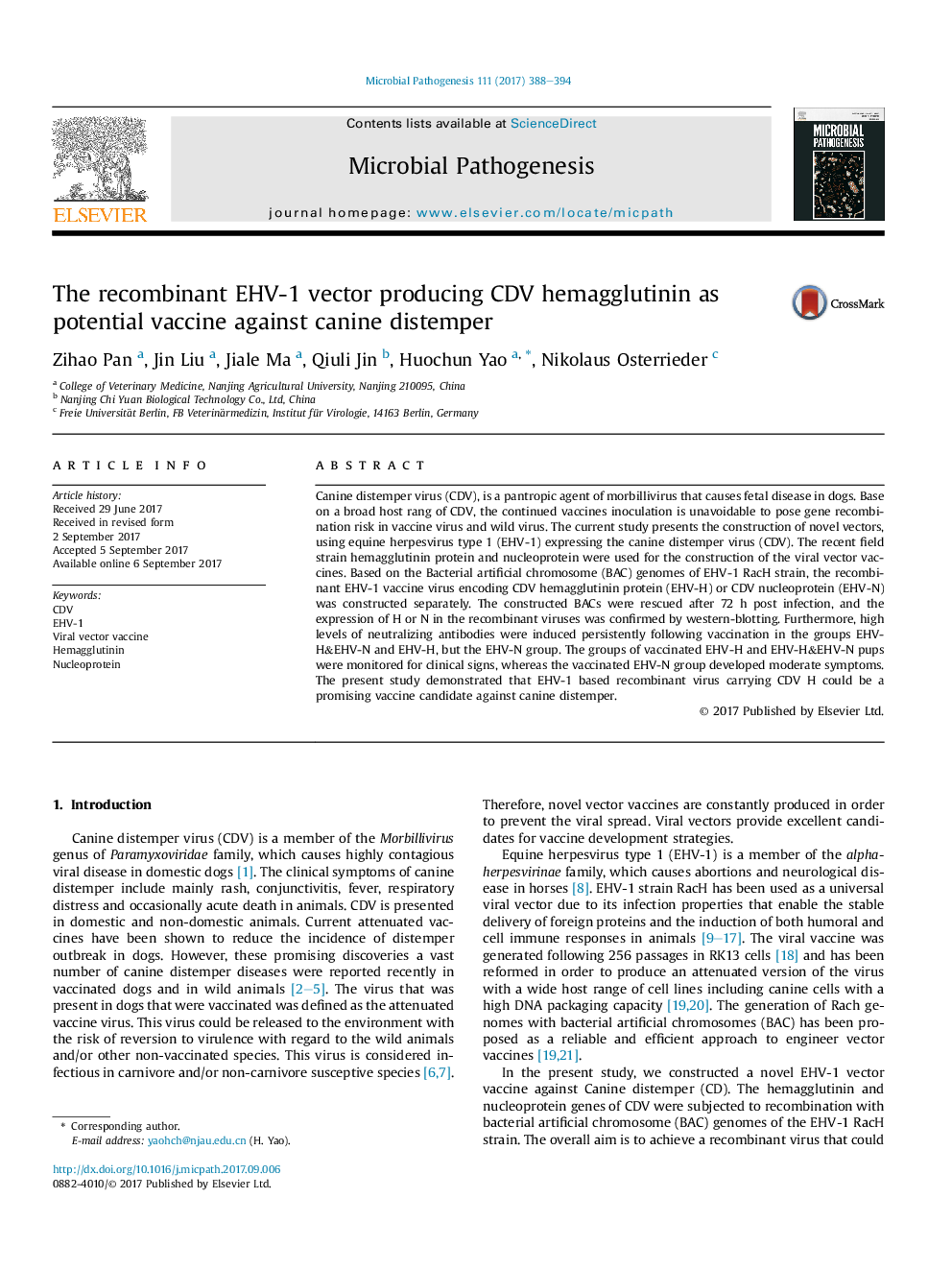| Article ID | Journal | Published Year | Pages | File Type |
|---|---|---|---|---|
| 5673613 | Microbial Pathogenesis | 2017 | 7 Pages |
â¢The recombinant Equine herpes virus type 1 (EHV-1) expressing canine distemper virus (CDV) structural proteins were constructed.â¢EHV-H could provide enough protection in pups for virulent strain lethal challenge while EHV-N did not show good protection.â¢The recombinant vaccines could be exert significant probability in genetic reassortment with virus from the reservoir of wild animals.
Canine distemper virus (CDV), is a pantropic agent of morbillivirus that causes fetal disease in dogs. Base on a broad host rang of CDV, the continued vaccines inoculation is unavoidable to pose gene recombination risk in vaccine virus and wild virus. The current study presents the construction of novel vectors, using equine herpesvirus type 1 (EHV-1) expressing the canine distemper virus (CDV). The recent field strain hemagglutinin protein and nucleoprotein were used for the construction of the viral vector vaccines. Based on the Bacterial artificial chromosome (BAC) genomes of EHV-1 RacH strain, the recombinant EHV-1 vaccine virus encoding CDV hemagglutinin protein (EHV-H) or CDV nucleoprotein (EHV-N) was constructed separately. The constructed BACs were rescued after 72Â h post infection, and the expression of H or N in the recombinant viruses was confirmed by western-blotting. Furthermore, high levels of neutralizing antibodies were induced persistently following vaccination in the groups EHV-H&EHV-N and EHV-H, but the EHV-N group. The groups of vaccinated EHV-H and EHV-H&EHV-N pups were monitored for clinical signs, whereas the vaccinated EHV-N group developed moderate symptoms. The present study demonstrated that EHV-1 based recombinant virus carrying CDV H could be a promising vaccine candidate against canine distemper.
